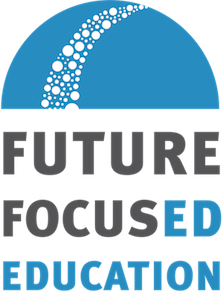How School Networks Create Shared Learning Environments and Community
By Jennifer Power, program officer, ECMC Foundation | January 18, 2018
“The networks can take on the work of building stakeholder support, translating alternative measures of success for accountability partners, collaborating within the network and with community partners, and problem solving around whatever the system throws its way, all the while protecting the integrity of the model and the ability of teachers and school leaders to focus on educating students rather than external politics. By doing this, the schools are able to demonstrate student success and win over the naysayers. "
It’s very easy for the education sector to feel insular at times. From teachers to school leaders to district officials, there is always important work to do, which can leave educators without the time or opportunity to look outside their immediate environment and learn from others. Collaboration efforts within schools and across districts are often implemented top-down and lack the necessary teacher and student voice to be successful. Failing to connect with others in the sector also means that the most successful school models and instructional practices can easily be missed, especially at a national level. Yet several schools have found ways to overcome these barriers by coming together as networks. School networks enable educators to leverage their shared knowledge and expertise to continuously improve and remain focused on the central goal of providing students with the skills needed to succeed in life and pursue their passions.
Working within a school system designed to serve the students of yesterday rather than the students of tomorrow, many educators get lost in traditional concepts of “school” and accountability measures. Several school networks, many of which are members of the Deeper Learning community convened by the Hewlett Foundation, buck this trend. Networks started with a new model of student learning focus on building the skills students need in today’s world—not just mastery of content, but also problem solving, critical thinking, communication, and collaboration, to name a few. Many of us can agree that we did not acquire all of these skills sitting in a classroom desk.
None of these schools models fits neatly into the traditional school system. This is where one major advantage of school networks comes into play. The networks can take on the work of building stakeholder support, translating alternative measures of success for accountability partners, collaborating within the network and with community partners, and problem solving around whatever the system throws its way, all the while protecting the integrity of the model and the ability of teachers and school leaders to focus on educating students rather than external politics. By doing this, the schools are able to demonstrate student success and win over the naysayers.
The Leadership Schools Network (LSN) is an excellent example of individual schools coming together as a network and realizing the benefits of working as one. ECMC Foundation funded the New Mexico Center for School Leadership to convene the schools to facilitate network development. Over the last year and a half, the LSN developed shared learning models and resources within and across their four schools. The network created space for teachers and school leaders to come together, reflect on their work, learn from one another, and make improvement plans for the future. While this might seem like an obvious practice, too often it is beyond the capacity of individual schools and districts to offer such meaningful professional development and leadership building opportunities. Additionally, advocacy work conducted by the network on behalf of the schools has led to a promising partnership with Albuquerque Public Schools. As of December 2017, all four LSN schools are now authorized by the district, whose board hopes to develop a collaborative relationship with the network. This is a direct result of the network effectively advocating for the work of the schools and garnering greater community support.
Through our work at ECMC Foundation, we gained a national perspective on the Deeper Learning networks. In addition to the work occurring within networks, there is a profound opportunity for the networks to learn from and collaborate with one another. Just as teachers often feel alone in their struggles, networks can also feel like they’re fighting against the traditional system alone. All of Deeper Learning networks are aligned in their core missions and the values that guide their work with students. Given what they have achieved for their students on their own, there is enormous potential for the networks together to push for a renewed education system with the needs of tomorrow’s students as its driving force.


